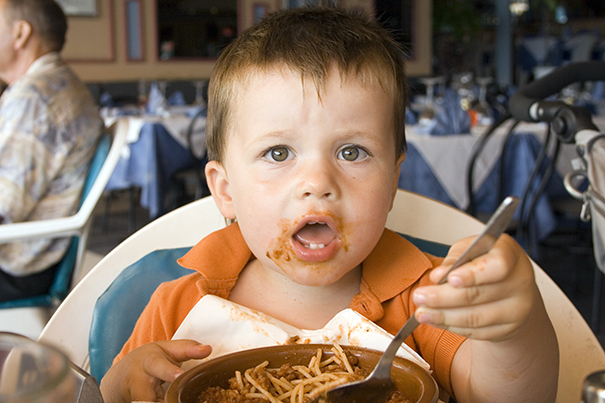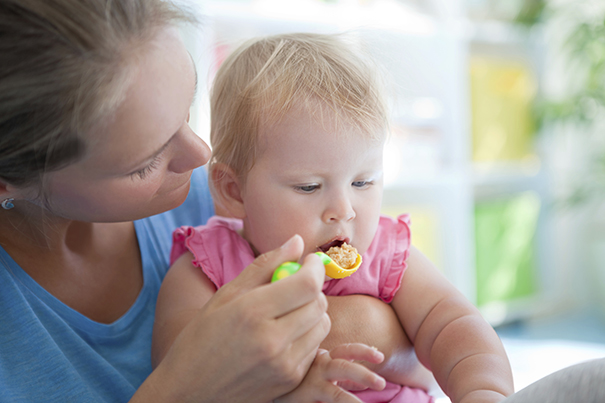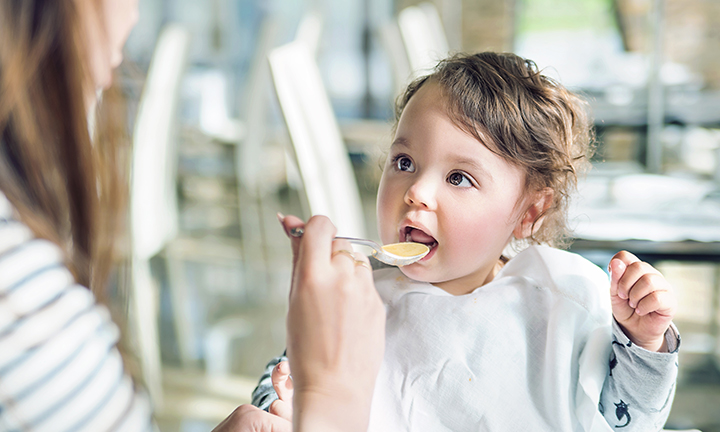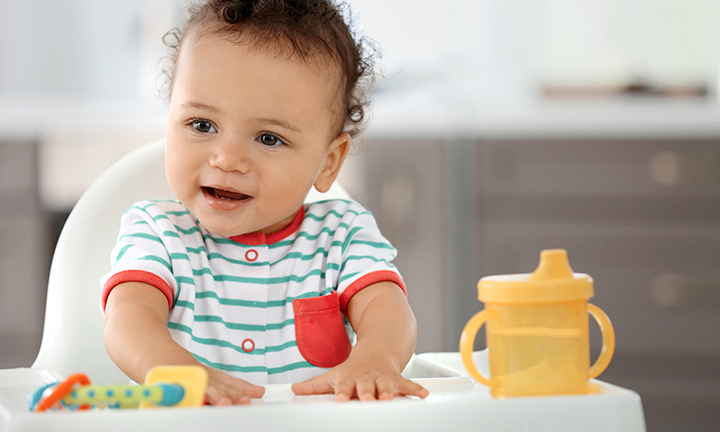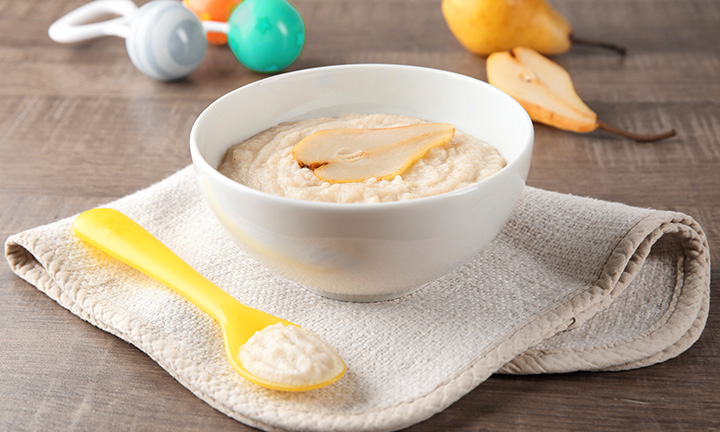
When Can I Give Baby Rice to My Child?
Key Takeaways
Up to about six months of age, most babies are content with being exclusively fed on milk, be it breastmilk or formula, but then you will probably start thinking of introducing your baby to all the exciting new tastes the world has to offer. Six months old is the best age to introduce first foods to baby, as weaning sooner than this may cause allergies or infections.
Baby rice cereal is a popular choice to start with, but you can also try other non-wheat cereals or pureed fruit and vegetables. In fact, it is a good idea to try other foods as well as baby rice, so that your child experiences a variety of different tastes and textures.
We have put together some helpful tips and suggestions as to what kinds of cereals and other tastes you can offer your baby as they start to explore the world of real food.
What is baby rice cereal?
Baby rice is the same as the normal rice that we eat, except that it has been ground to a powder so that it is easy for babies to swallow. It is a traditional first food for infants who are being introduced to solid food, a process called weaning.
The most common format that baby rice comes in is a dry, powdered cereal to which water or baby milk is added to form a creamy consistency. It can also come premixed in jars. Rice is the single-grain cereal that is most often recommended for infants when they start eating solid food, as it is bland in taste, hypo-allergenic, smooth in texture and suitable for all types of diets.
Is baby rice safe for my baby to eat?
It’s perfectly fine to include some rice cereal in your baby’s diet as long as this is not the only food that they are eating. You will have heard experts recommending limiting a baby’s intake of rice; this is because of the naturally occurring levels of inorganic arsenic that there is within it (“inorganic” refers to arsenic’s specific chemical compound bound with carbon).
Arsenic is a naturally occurring element that can enter the food supply (including cereal crops) through water, soil or the air. Rice can absorb more inorganic arsenic from its environment than other crops.
As a baby’s body weight is much lower than that of an adult, their intake of inorganic arsenic through rice cereal could be up to three times higher than an adult’s, so if a baby eats too much rice it could cause long-term health problems later on.
What alternatives are there to baby rice?
Baby rice isn’t the only cereal that you can try your baby with. You could offer another single-grain cereal such as cornmeal, oats or barley. Wheat is quite starchy and high in fibre and you might find that it is too filling for a young baby, so use it in smaller amounts, along with other types of food. Baby cereals can be mixed with water or milk – look for those that are specifically made for babies, as they will be fortified with important nutrients that your baby needs, like iron and zinc.
When you first start introducing your baby to new foods, take your time and offer baby new foods one at a time, maybe over a couple of days or so, allowing them to get used to the new tastes as well as giving you time to watch out for any possible allergic reactions. You can supplement your baby rice or other cereal with yoghurt and mashed fruit and veggies like banana, avocado and sweet potato… the variations are endless.
How often should I give my child baby cereal?
A good time to try out baby cereal is when your baby is sitting up, alert and a little hungry – usually after you have given them their milk (breast or bottle). Try spoon-feeding baby a small amount of baby rice or other cereal once or twice a day to start with, letting them become used to the new taste and texture of the food. Your baby only has a tiny tummy and doesn’t need lots of food at this age.
Can I use rice milk and other rice-based products?
Just because it is rice-based doesn’t mean it is suitable to feed to your child. As your baby gets older, you could give them mashed rice as part of a varied and balanced diet. Rice milk may be very popular with adults but it should not be used as a substitute for breast milk, formula or cow's milk in a baby’s diet. Cow’s milk is also not recommended for babies under a year old. If your child is over one year old and has developed sensitivity to cow’s milk, your health visitor can help recommend alternative milks for you to use, if needed. They can also give you advice on the rice products that you may be considering giving baby.
At what age should I try feeding my baby cereals?
For most babies, six months is a good age to introduce baby rice or cereal. Breast milk or formula should provide most of your baby's nutrition for their first year.
Waiting until your baby has reached six months is important because by this time, your baby will have outgrown a natural reflex that all babies are born with that causes them to push their tongue against anything inserted into their mouths. Most babies have grown out of this tongue thrust reflex by about four to five months of age.
How do I prepare dry infant cereals like baby rice?
If you’re using dry cereal, mix one tablespoon of dry cereal with about four tablespoons of breast milk, formula or water. Otherwise, follow the directions on the container. You may adjust this to improve the consistency.
Can I feed my baby rice in a bottle?
Unless your health visitor or GP has recommended you to do this, don't feed your baby cereal from a bottle. Feeding your baby rice or other cereals from a bottle can lead to them consuming extra unnecessary calories and they might get more food than they need, which could lead to other problems later on.
FAQS AT A GLANCE
Weaning is recommended from six months onward, unless your GP has said otherwise. It is at this age that their digestive systems are mature enough to cope with food.
The bottom line
That first taste of baby rice can be an exciting moment for you and your baby, but there are a few things to consider before you introduce cereals into their diet. Don’t be tempted to start too early – six months is a good time for most. Try introducing other foods alongside cereals and remember that breast milk or formula should remain their main source of food until baby is a year old. There’s a great variety of cereals available for infants, so if you are concerned about the safety of rice, why not try something else?
As your baby starts eating solid food, you deserve lots of rewards for all those extra nappy changes. Download the Pampers Club app and get rewards for all your Pampers purchases.
The information in this article is based on the expert advice found in trusted medical and government sources, such as the National Health Service (NHS).The content on this page should not replace professional medical advice. Always consult medical professionals for full diagnosis and treatment.
- https://www.nhs.uk/conditions/baby/weaning-and-feeding/babys-first-solid-foods/
- https://www.motherandbaby.co.uk/baby/weaning/baby-rice/
- https://cot.food.gov.uk/sites/default/files/finalstatementonarsenic_0.pdf
- NHS: Weaning and Complementary Feeding Leaflet
- https://www.nhs.uk/conditions/baby/weaning-and-feeding/drinks-and-cups-for-babies-and-young-children/
Read more about Baby
Related Articles
Join Pampers Club and get:



